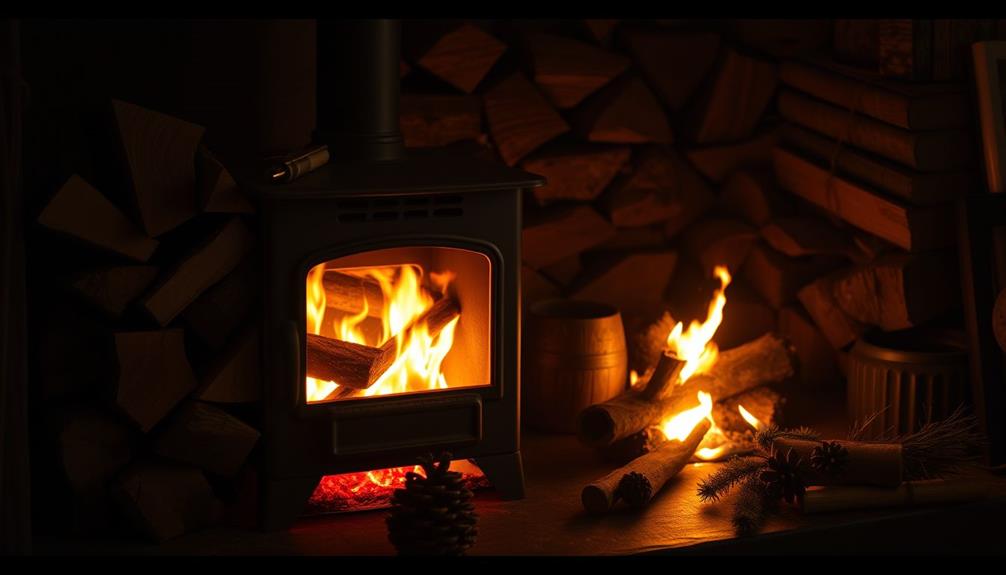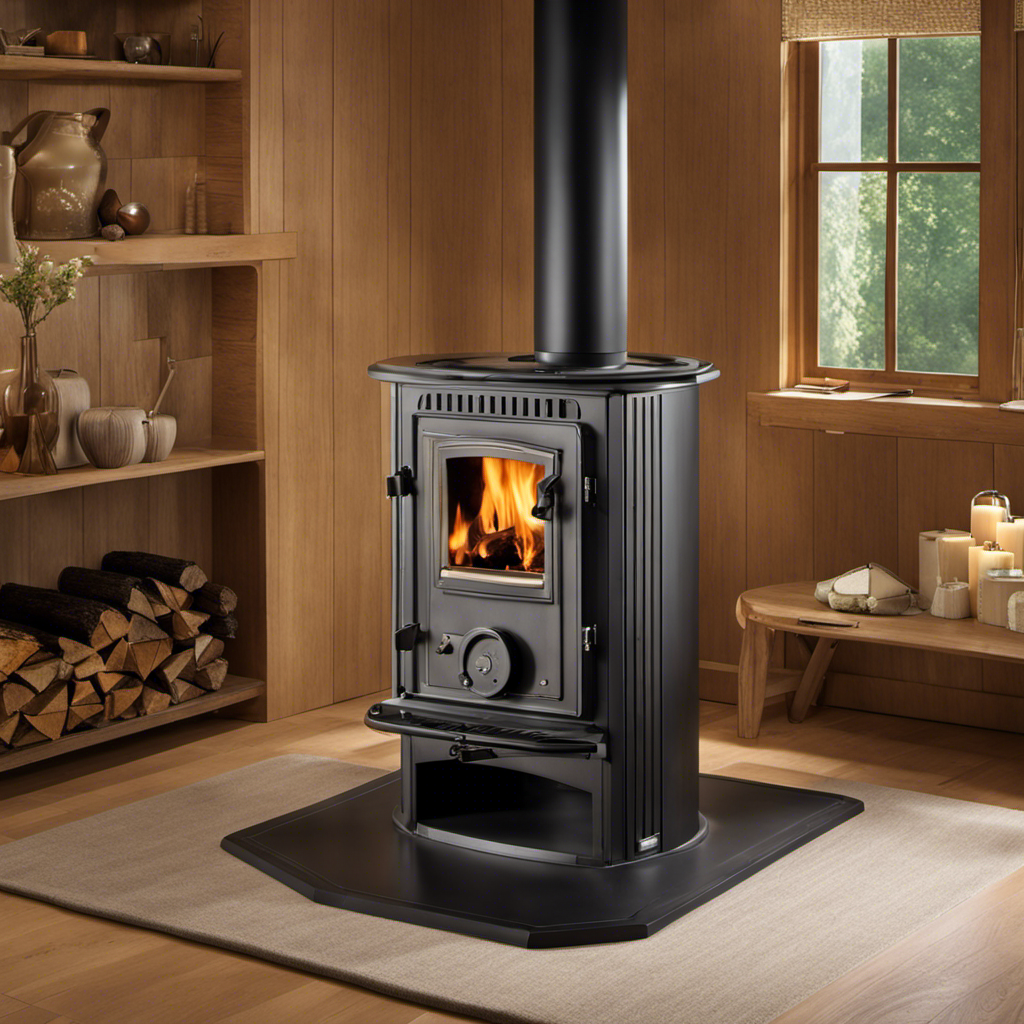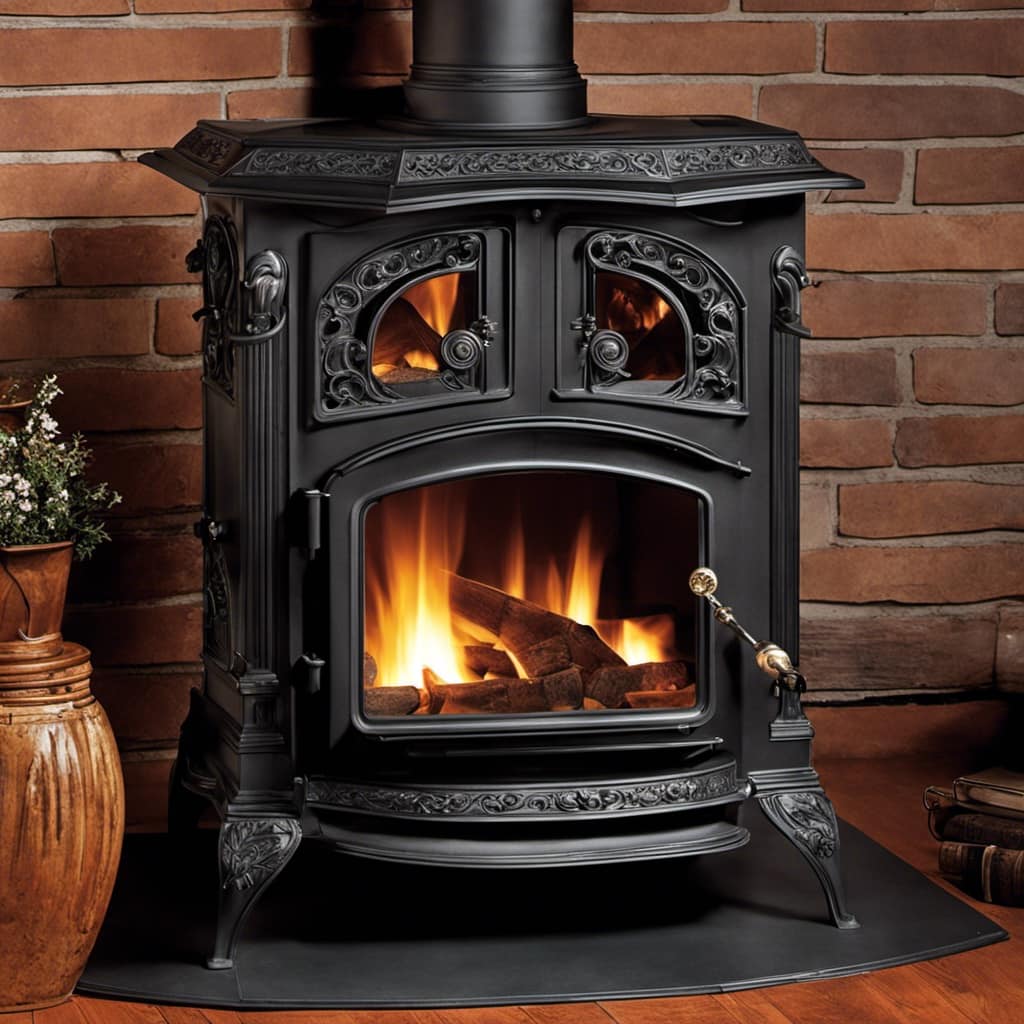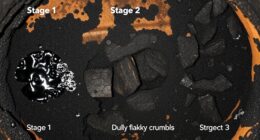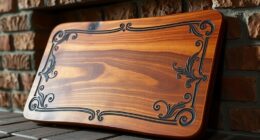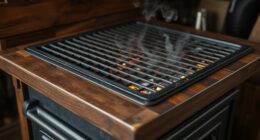Building the perfect fire in your wood stove is all about technique and good materials. Start with a sturdy base of split logs for airflow, then use crumpled newspaper and kindling in a crisscross pattern to ignite. Choose well-seasoned hardwoods like oak or maple for a longer, cleaner burn. During maintenance, adjust logs regularly to promote even burning and cover embers with ash at night to keep warm. Safety is essential, so always keep a fire extinguisher nearby and check your wood for mold. Master these steps, and soon you'll discover even more tips to elevate your fire-building skills.
Key Takeaways
- Start with a sturdy base of split logs to ensure proper airflow for efficient combustion in your wood stove.
- Use crumpled newspaper or a fire starter to ignite the fire safely and quickly.
- Layer kindling in a crisscross pattern above the ignition source, gradually adding larger logs as the fire grows.
- Monitor air intake and flame height to maintain optimal burning conditions and consistent heat output.
- Regularly add well-seasoned hardwoods to sustain the fire, avoiding moisture-rich wood for cleaner burning.
Historical Significance of Fireplaces
Fireplaces have long been the heart of the home, serving important functions beyond just providing warmth. In colonial times, the fireplace was essential for cooking and washing, making it a central element in daily life. You can imagine families gathering around a wood burning fireplace, sharing stories and enjoying each other's company during harsh New England winters.
The crackling of firewood and the smell of kindling igniting created a sense of comfort and security. Understanding the importance of maintaining a clean environment in your home, akin to the key items for a home cleaning kit, can enhance your overall experience by ensuring that the space around your fireplace is inviting and safe.
However, as society evolved, the art of fire building shifted dramatically. Traditional skills once significant for survival have largely faded from modern practices. Today, many people may not appreciate the historical significance of their fireplace, as it often serves merely as a decorative feature rather than an important resource.
Despite these changes, fireplaces continue to symbolize togetherness and warmth. The design of fireplaces has adapted over time, reflecting advancements in technology and fuel sources, yet their role in fostering family connections remains unchanged.
Understanding the historical significance of your fireplace can enhance your experience when you're Building the Perfect Fire, bringing a sense of nostalgia and appreciation for the rich traditions that have shaped our homes.
Essential Fire Building Techniques
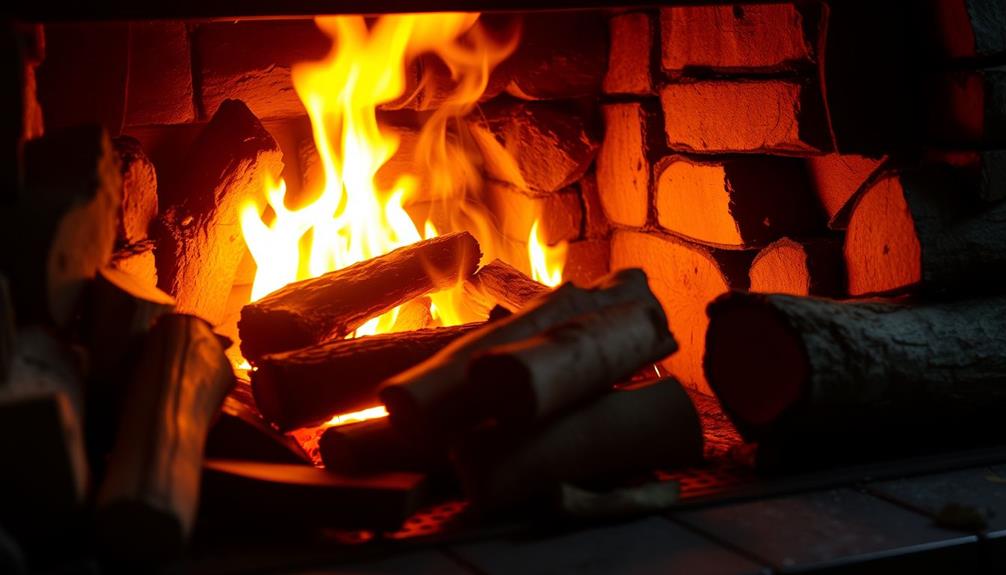
Building a successful fire in your wood stove starts with the right techniques to guarantee efficiency and warmth.
Begin by laying a sturdy base with two large split logs, ensuring there's a gap for airflow. This foundation is essential for effective combustion, especially if you're using a high-efficiency stove like the Englander 10-Cpm Corn Wood Pellet Stove, which generates up to 50,000 BTUs.
Next, use crumpled newspaper or a fire starter placed between the logs to ignite the fire. Avoid any materials that might produce harmful odors.
Once you've got that going, layer pieces of kindling in a crisscross pattern above the newspaper. Gradually increase the size of the wood pieces to create sustained heat and effective burning.
Maintaining ideal airflow is key, so make sure the logs are spaced adequately apart. Regularly feed the fire with fresh firewood from both the front and back to promote even burning and keep those burning embers glowing.
Selecting the Right Fuel
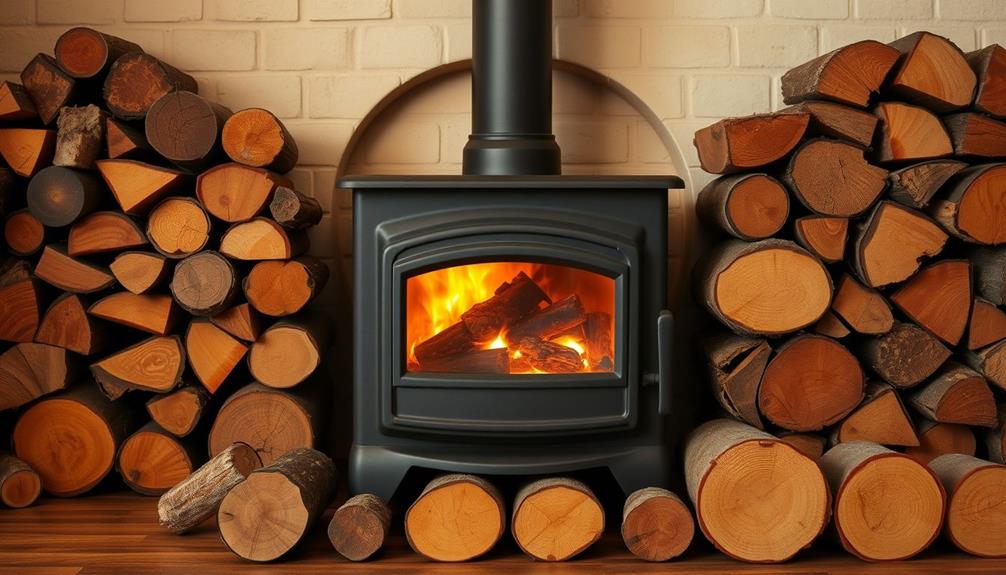
When it comes to selecting the right fuel for your wood stove, using well-seasoned hardwoods like oak, maple, and cherry is crucial. These woods have lower moisture content, providing a longer and hotter burn compared to softwoods and evergreens.
Additionally, using a clean-burning fuel can help improve overall air quality in your home, as air purifiers reduce allergens and harmful particles. Avoid evergreens like pine and fir; they produce less heat and can lead to creosote buildup in your chimney, which is a fire hazard.
Opt for kiln-dried firewood, which has a moisture content of 20% or less. This guarantees a cleaner burn and reduces smoke production, enhancing your burning efficiency.
Always inspect your firewood for signs of mold or rot, as damaged wood can negatively impact your fire's performance and create excessive smoke.
Additionally, incorporate dry kindling made from materials like twigs, wine corks, or waxed cardboard to ignite your fire efficiently. This helps you achieve a strong flame without the toxic smoke that can come from using damp or treated wood.
Choose your fuel wisely, and you'll create a warm, inviting atmosphere in your home while maximizing the efficiency of your wood stove.
Fire Maintenance and Management
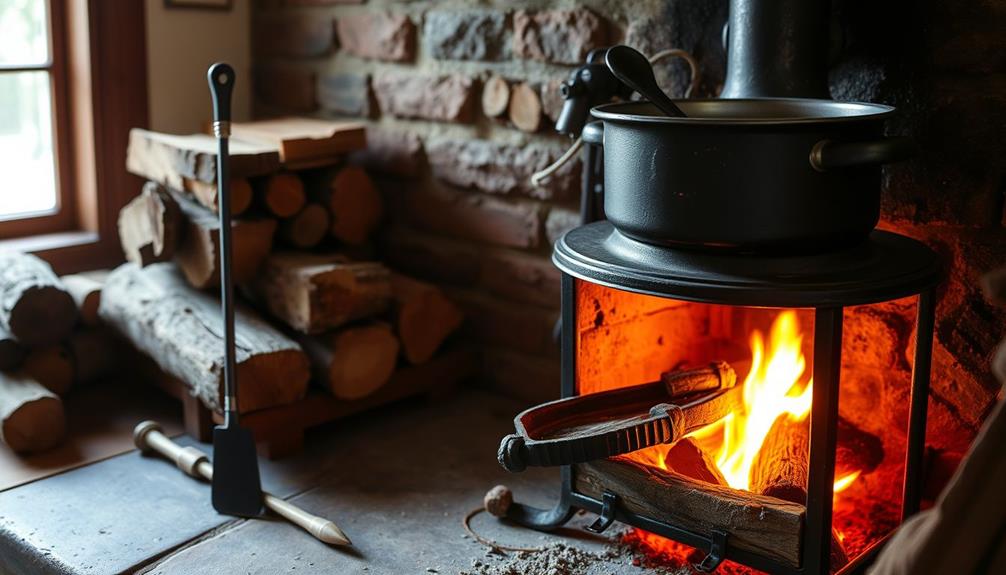
Once you've selected the right fuel for your wood stove, effective fire maintenance and management become essential to maximizing its performance and heat output.
To keep your fire burning efficiently, feed it evenly from both the front and back. This promotes consistent burning and helps maintain that cozy warmth. Regularly checking the flame height is vital; if it gets too high, it might indicate insufficient air intake, so adjust accordingly for ideal combustion.
Additionally, verifying proper airflow in your stove can enhance burning efficiency, similar to how well-draining soil is necessary for plant health.
Every 30 minutes, take a moment to check the fire. Adjust the logs and airflow as needed to keep an effective burn. As the wood pieces burn down, replace them gradually to sustain continuous heat and prevent sudden temperature drops.
At night, cover the embers with ashes to preserve residual heat, making it easier to make a fire in the morning. Using your fireplace tools effectively can help you manage the fire better.
With these strategies, you'll not only enjoy a warm space but also guarantee your wood stove operates at its best. Happy burning!
Safety Precautions for Wood Fires
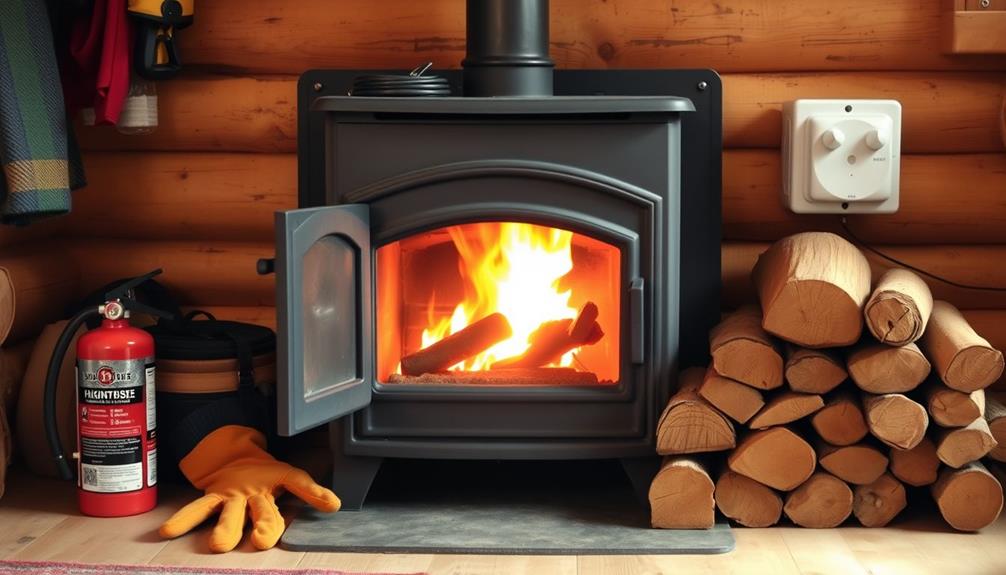
To guarantee a safe environment while enjoying the warmth of your wood stove, it's vital to follow specific safety precautions. First, always keep a fire extinguisher within reach. This guarantees you're prepared to tackle any unexpected flare-ups or emergencies quickly.
Schedule annual inspections with a certified chimney sweep to check your wood stove and chimney for creosote buildup, which can lead to chimney fires. Additionally, consider keeping an eye on your pets, especially if you have dogs that might be curious about the fire, as they can sometimes get too close to the heat. Dog health and safety is important in maintaining a safe home environment.
Use well-seasoned firewood to reduce the risk of excessive smoke and creosote accumulation. This not only keeps your fire burning efficiently but also minimizes potential hazards.
Never leave a fire unattended without a protective screen in place. This screen prevents flying embers from escaping and igniting nearby materials, which can pose a significant risk.
Be mindful of flying embers and maintain a safe distance from flammable objects. Proper venting is important, as it helps reduce the risk of smoke inhalation and fire spread.
Frequently Asked Questions
How to Get a Good Fire Going in a Wood Stove?
To get a good fire going in a wood stove, start with crumpled newspaper and kindling, ensuring airflow. Use seasoned hardwoods, add logs gradually, and monitor closely for consistent heat while enjoying the cozy ambiance.
How to Build the Best Fire in a Wood Stove?
You're about to create the most magnificent fire ever! Start by preparing the firebox, layering kindling in a crisscross pattern, and use seasoned hardwoods for a blazing heat that'll warm your entire home.
How Do You Burn Wood Efficiently on a Wood Stove?
To burn wood efficiently, use seasoned hardwood, stack logs for airflow, adjust the air intake, and maintain a clean stove. Regular flue checks prevent creosote buildup and guarantee ideal heat with minimal smoke.
How Do You Make a Fire Last All Night in a Wood Stove?
To make your fire last all night, start with seasoned hardwood, stack logs for airflow, cover embers with ash, and adjust the damper to control airflow, ensuring a steady, prolonged burn throughout the night.
Conclusion
Building the perfect fire in your wood stove isn't just a skill; it's an art that can truly enhance your home's warmth and ambiance. Did you know that a well-built fire can produce up to 75% more heat than a poorly constructed one? By mastering essential techniques, selecting the right fuel, and practicing safety precautions, you'll not only enjoy a cozy atmosphere but also save on energy costs. So, gather your materials and ignite your passion for fire building!

